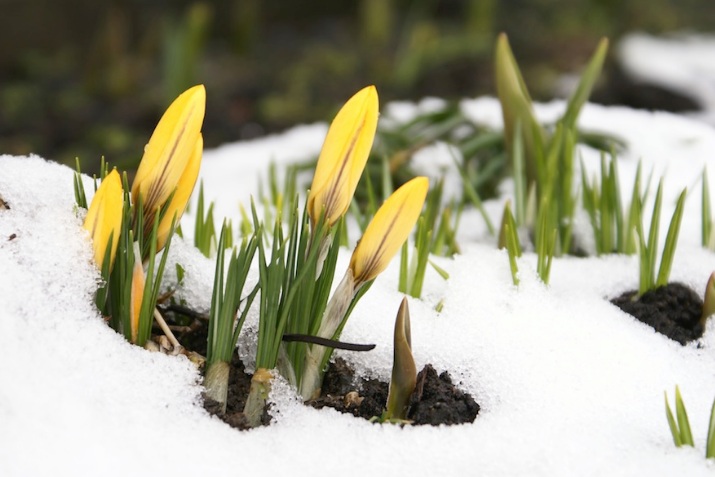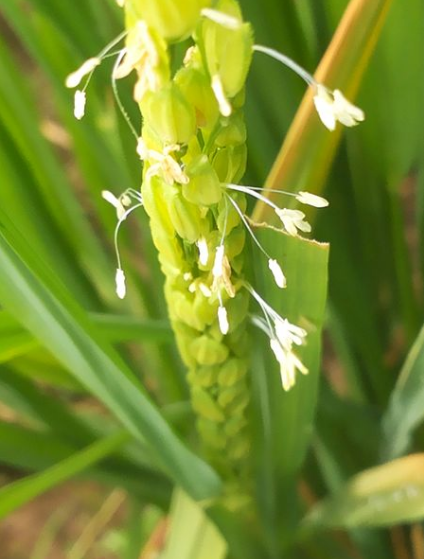Photoperiodism refers to the response of plants to the lengths of dark and light periods. Many flowering plants (Angiosperms) use a photoreceptor protein such as phytochrome or crytochrome to sense changes in their environment as far night or day length is concerned, which they take as signals a to flower.
Vernalization is the artificial exposure of plants (or seeds) to low temperatures in order to stimulate flowering or to enhance seed production. Usually, plant that require to be vernalized need to be exposed to a certain number of days of cold temperatures below a certain threshold. The required temperature and lengths of chilling depend on the plant species and variety.
For many perennial plants such as fruit tree species, a period of cold is needed first to induce dormancy and then later, after the requisite period of time, re-emerge from that dormancy prior to flowering. Examples of plants or crops that have vernalization requirement include: apples, peaches, tulips, hyacinths, crocus, daffodils, garlic and winter cereals such as wheat. Biennial plants like hollyhocks, foxgloves, carrots and kale produce only vegetative growth (stems, leaves and roots) during their first year then produce flowers and seeds after vernalization over the winter.

Significance of Photoperiodism And Vernalization
- Both are physiological processes substituting or compensating the effect of thermophase.
- Both help in crop improvement.
- It increases the resistance of the plants to the fungal diseases.
- They help to shorten the vegetative period of the plant.
READ FURTHER: Difference Between Photoperiodism and Vernalization
Photoperiodism Vs. Vernalization In Tabular Form
| BASIS OF COMPARISON | PHOTOPERIODISM | VERNALIZATION |
| Description | Photoperiodism is the induction of flowering in plants by subjecting them to the appropriate photoperiods that is dark and light periods. | Vernalization is the process of preparing plants for perceiving stimulus for flower induction by subjecting them to cold temperatures. |
| Reversal or Nullification of the process | Photoperiodic induction cannot be nullified or reversed by exposure to unfavorable photoperiods. | Vernalized plants can easily be devernalized by subjecting them to high high temperature (about 40 degrees Celsius). |
| Appropriate Condition | Subjection of plants to two or three appropriate photoperiods is only what is required to induce flowering. | Subjection of plants to low temperature (between 2 to12 degrees Celsius) for about 50 days is only what is required to induce flowering. |
| Induction Of Flowering | Phototropism provides both stimulus and induction of flowering. | Vernalization does not induce flowering, it only prepares the plant for perceiving stimulus. |
| Hypothetical Hormone That Mediates the Process | Photoperiodism is mediated through a hypothetical hormone referred to as florigen. | Vernalization is mediated through a hypothetical hormone referred to as vernalin which is thought to induce the synthesis of florigen in plants. |
| Gibberellic Acid | Gibberellic acid can replace exposure to long photoperiods only in long day plants. | Gibberellic acid can replace cold treatment to induce vernalization in all plants. |
| The Stimuli | The stimuli induced by light in photoperiodism are received only by green leaves. | The stimuli induced by the cold exposure in the vernalization process are received by leaves, meristem and embryos. |
| The Stimuli | The stimuli itself successfully induces flowering. | The stimulus itself does not induce flowering, it must also be followed by appropriate photoperiod and temperature. |
What Are Some Of The Similarities Between Photoperiodism And Vernalization?

- Both processes can take place artificially or naturally.
- Both photoperiodism and vernalization processes are mediated through hormones.
- Both are physiological processes.
- Both vernalization and photoperiodism influence flowering in plants.
Applications Of Vernalization
- In the biennials, vernilization induces early flowering and early fruit setting.
- Vernalization can be used to convert winter crop varieties into spring varieties.
- Used in horticulture to induce flowering by grafting vernalized shoot apex with a non-vernalized shoot apex.